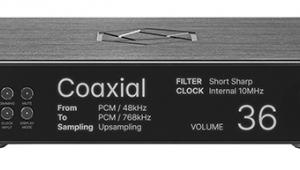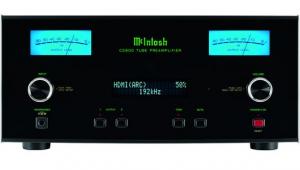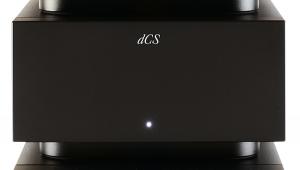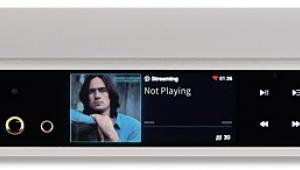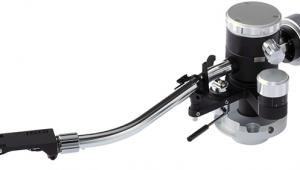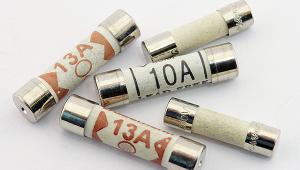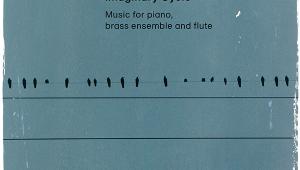Lumin D3 Network-Attached DAC

 Building on the earlier D2 platform, Lumin's equally compact D3 model features a new processor, new DAC, LeedH volume control and support for increased file sample rates
Building on the earlier D2 platform, Lumin's equally compact D3 model features a new processor, new DAC, LeedH volume control and support for increased file sample rates
It's not only loudspeaker brands playing the trickle-down technology game. Lumin's D3, its new entry-level streaming DAC, borrows liberally from the Hong Kong manufacturer's costlier network hardware, utilising elements both inside and out to effect a comprehensive upgrade on the previous D2 [HFN Jul '20]. Its maker says the D3 'brings the audiophile potential of music streaming within everyone's reach', and while the £2195 price tag makes that somewhat debatable, it certainly has plenty of appeal.
Firstly, there's the form factor. The D3 – like the D2 – measures a neat and tidy 30cm wide and 24cm deep and can be lifted from its box with one hand. From that moment on it continues to be easy to live with, helped by a slick custom app that handles both control of music playback and configuration of hardware settings. A feature of all Lumin's streamers, and recently adopted in part by Audiolab's 9000N [HFN Mar '24], it puts some other rival streaming apps to shame.
Platform Change
The D3 occupies the entry position in Lumin's range of network player/DACs, below the £4195 T3 [HFN Apr '23], £8995 P1 [HFN Jul '22] and flagship X1, a two-box design with external PSU selling for £11,495. It's not the company's most affordable option, however, that being the U2 Mini, a transport-only streamer available for £1995. Lumin previously also sold an all-in-one streamer/DAC/amp, the M1, but this has been discontinued. There is still a power amp option, rated at 2x160W/8ohm and named simply 'Amp', but at £10,995 and twice the size it doesn't feel like a perfect partner for the D3.
As regards changes implemented for this third-generation model (the original D1 arrived in 2015), it might be simpler to outline what hasn't changed. This includes the general aesthetic design, although the black or silver casework now gets the 'silky surfacing' finish introduced on the P1 and is entirely aluminium rather than incorporating steel elements. The small text-based info display is retained, showing track title, sampling rate, etc, just as the physical connectivity still comprises balanced and single-ended outputs, two USB-A sockets for connection of external drives, and a coaxial (BNC) output, all tucked into the rear panel.
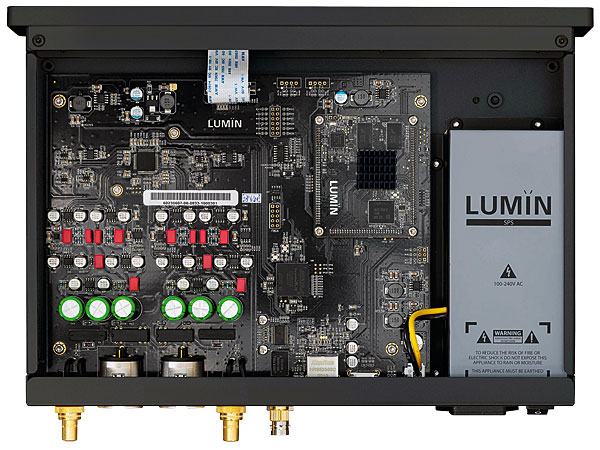
Beyond that, Lumin has completed a substantial overhaul of its D series model, building it around the new hardware/software platform seen in the T3 where 'increased processing power and storage capacity provide greater resampling flexibility and future-proofing'. This means resampling now extends to DSD256 and 384kHz PCM, versus the DSD128 and 192kHz of the D2, and the D3 will also handle those new higher sample rates natively thanks to Lumin upgrading its dual-balanced DAC architecture to one of the ESS solutions (the ES9028PRO in this instance).
Ode To Joy
In the D3 this DAC stage feeds into a newly designed analogue output utilising buffer technology from the flagship X1. Furthermore, the streamer gets a LeedH digital volume control – a third-party system developed by Gilles Millot (www.acoustical-beauty.com) and present on other contemporary Lumin models – that was absent from the D2 at launch.
As well as the resampling mentioned earlier (plus PCM/DSD transcoding), the latest streaming/processing platform introduces MQA support (full/core decode and passthrough), Tidal Connect and Spotify Connect, Apple AirPlay 2, and UPnP. The D3 is also Roon Ready and can even stream content from a Plex server.
Because operation of the unit is entirely app-driven, and Lumin continues to eschew Wi-Fi functionality across its products, a wired network connection is required in order to get everything up and running. If there's nothing in the D3's Ethernet socket when you switch it on, the front-panel display lets you know. Once connected, the streamer then declares itself 'Ready for music'. Little touches like this contribute to the D3's joy of ownership, as does the stable relationship between Lumin's app and its hardware. One niggle? The lip that extends over the D3's rear-side connections, and lack of space, makes disconnecting XLR cables awkward.


